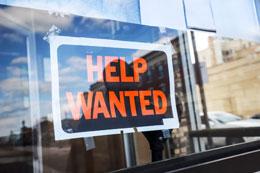Provinces seek more control over immigration

By Mata Press Service
As Canada struggles with a critical labour shortage and a historical visa processing backlog, several provinces are urging Ottawa to let them select the newcomers they need.
Provincial Immigration Ministers from Ontario, Alberta, Saskatchewan, and Manitoba in a letter to their federal counterpart Sean Fraser, said they want more control over the immigration process and be allowed to choose newcomers who have "the greatest chance of success."
"We need the ability to respond to the rapidly evolving needs of specific areas and communities, with a flexible system that we can adapt to changing economic and humanitarian needs," the letter states.
"We are facing a global race for talent as people all around the world search for a better place to build a life for themselves and their families."
The letter, sent on July 26, noted that there are labour shortages across the country and Canada must do more to attract immigrants with in-demand skills, particularly in skilled trades.
“It is time the Federal Government respected provinces and allowed them to seize this opportunity, recruit workers, and offer them good jobs,” it stated.
“We owe this not only to ourselves but also to our children and their children. We urge you to work with the provinces to improve Canada’s immigration system to meet our economic and community needs.”
The letter was delivered at last week’s Forum of Ministers Responsible for Immigration (FMRI), meeting to consider opportunities for the future of immigration to Canada and initiatives to respond to pan-Canadian labour shortages.
Ministers discussed ways to maximize the effectiveness of the immigration system to meet economic and regional needs, including increasing provincial/territorial (PT) involvement in the selection process and input into Express Entry modernization, avoiding duplication, increasing the allocations of the Provincial/Territorial Nominee Programs (PNPs) and providing timely multi-year allocations before March 31st, 2023.
They also had conversations about Canada’s immigration response to the full-scale invasion of Ukraine and the humanitarian crisis in Afghanistan, federal-provincial/territorial (FPT) measures to attract immigrants to meet labour market and demographic needs, and recent settlement and integration efforts.
“Immigration is key to addressing labour shortages across our country and I am excited about the productive discussions with the provinces and territories we’ve had. As Canada continues to see increased demand of those seeking to live and work in Canada, our governments will continue to work together to ensure our immigration system can withstand the demand and meet the diverse needs of our clients,” said Sean Fraser, Minister of Immigration, Refugees and Citizenship and federal co-chair of the Forum of Ministers responsible for Immigration.
“This joint meeting has allowed us to strategize on ways to streamline the immigration process to help provinces and territories meet their labour market priorities while finding ways to be more flexible in our approaches. We will continue to find ways to improve the experience of all immigration candidates and employers throughout the immigration process,” said Arlene Dunn, Minister Responsible for Immigration, Minister Responsible for Opportunities New Brunswick.
Currently about about 2.7 million people worldwide are waiting to resettle in Canada as the country struggles with an historic immigration backlog which is severely impacting businesses looking for foreign workers.
According to numbers obtained from Immigration, Refugees and Citizenship Canada (IRCC) by CIC News, the backlog encompasses every application filed, from citizenship to visas to requests for permanent residency.
The backlog of citizenship applications alone stands at 444,792, while most of the list (1.7 million) is applications for temporary residence.
Not only is it the worst immigration backlog of all time, but it is growing exponentially with each passing week. This time last year, the backlog was just 1.5 million names, according to CIC News. In just the last month, the list has grown by 300,000 — an increase of roughly 1,000 new applicants per day.
Most of the visa applicants – about 700,000 – are from India.
If the backlog continues to grow at the current rate, it will only be another four months until the number of applicants awaiting processing by the IRCC is equivalent to 10 percent of the Canadian population of 38 million, said the National Post.
As the backlog grows, Canada aims to attract about 1.3 million new immigrants over the next three years to help fill critical labour shortages and fuel post-pandemic growth.
The 2022–2024 Immigration Levels Plan aims to continue welcoming immigrants at a rate of about one percent of Canada’s population, including 431,645 permanent residents in 2022 (an increase of about 21,000 people from its original plan), 447,055 in 2023, and 451,000 in 2024.
In a recent report by the Business Council of Canada, Canadian employers cited “processing delays” as the top barrier to recruiting international talent.
Processing delays are the top barrier experienced by employers when recruiting international talent, stated the report, which was based on a survey of 80 companies that employ nearly 1,650,000 Canadians in more than 20 industries, generating revenues of approximately $1.2 trillion in 2020.
There are now over one million vacant jobs in Canada.
The high job vacancy rate, combined with the low unemployment rate outlined by the Labour Force Survey for May 2022, points to a growing labour shortage in several sectors and an increased need for immigration in Canada as its workforce reaches retirement age, said the immigration-focussed publication, CIC News.









